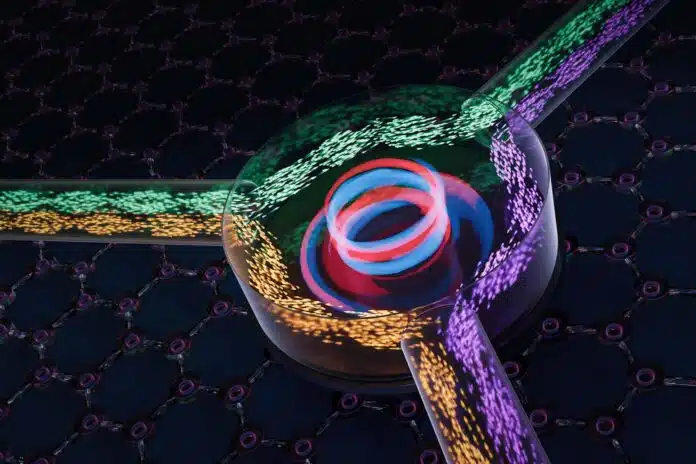
By Amit Malewar 16 Oct, 2024
Collected at: https://www.techexplorist.com/scientists-managed-make-sound-waves-travel-one-direction/91212/
Normally, sound and other waves travel equally in both directions: forward and backward. This is great for conversations, as both people can hear each other. However, in some technical applications, it’s better if the waves only go one way to avoid unwanted reflections, like with light or microwaves.
Researchers figured out how to suppress sound waves from traveling backward about a decade ago. However, this also weakened the waves moving forward.
A research team at ETH Zurich, led by Professor Nicolas Noiray and in collaboration with Romain Fleury from EPFL, has created a method to stop sound waves from traveling backward while keeping their forward movement strong.
This one-way sound system is based on self-oscillations, where a dynamic system periodically repeats its behavior. According to researchers, this method could be applied to electromagnetic waves.
Professor Nicolas Noiray devised a clever way to let sound waves move in only one direction using harmless, self-sustaining aero-acoustic oscillations through a circulator. In this setup, the natural weakening of the sound waves is balanced out by the self-oscillations in the circulator, which sync up with incoming waves and help them gain energy.
The circulator is a disk-shaped cavity with air blown in from one side through a central opening. Adjusting the blowing speed and swirl intensity generates a whistling sound inside the cavity.
Unlike regular whistles that produce sound from a standing wave in the cavity, this new whistle generates sound from a spinning wave.
Turning the idea into an experiment took some time. First, Noiray and his team studied the fluid mechanics of the spinning wave whistle. They then added three acoustic waveguides arranged in a triangular shape around the edge of the circulator.
Sound waves entering through the first waveguide can exit through the second one. However, if a wave enters through the second waveguide, it can’t go “backward” through the first; instead, it exits through the third waveguide.
After several years of development and theoretical modeling, the ETH researchers could finally test their circulator in experiments. They sent a sound wave with a frequency of about 800 Hertz (similar to a high g note sung by a soprano) through the first waveguide and measured how well it traveled to the second and third waveguides.
As expected, the sound wave didn’t reach the third waveguide. However, a sound wave that was even stronger than the original wave they sent in came out of the second waveguide (in the “forward” direction).
Noiray said, “This concept of loss-compensated non-reciprocal wave propagation is, in our view, an important result that can also be transferred to other systems.”
Journal Reference:
- Pedergnana T, Faure-Beaulieu A, Fleury R, Noiray N: Loss-compensated non-reciprocal scattering based on synchronization. Nature Communications 15, 7436 (2024). DOI: 10.1038/s41467-024-51373-y

Leave a Reply